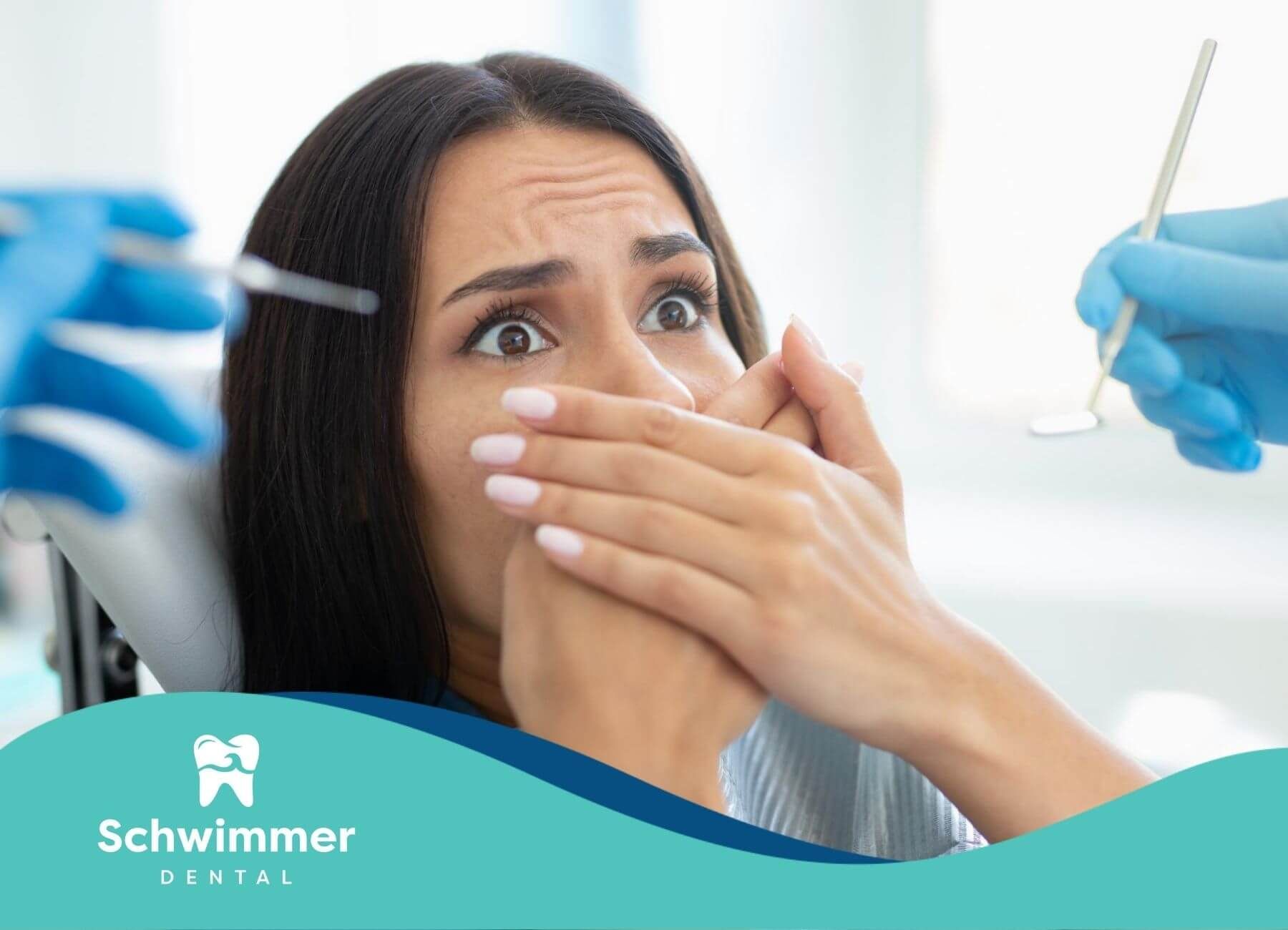Laser Dentistry Procedures: A Modern Approach to Dental Care
Understanding Dental Lasers
Laser dentistry has revolutionized modern dental care, offering a more precise and less painful alternative to traditional methods. To fully appreciate this modern approach, one must understand the types of dental lasers and their biological effects.
Types of Dental Lasers
Dental lasers are designed for a variety of procedures. Each type of laser has specific uses and effects:
- Erbium Lasers: Ideal for cutting hard tissue like enamel and bone. They are widely used in teeth whitening, root canals, and cavity preparations.
- Nd:YAG Lasers: Effective for soft tissue procedures such as removing periodontal tissue and treating gum disease. They focus on killing bacteria and promoting healing.
- Diode Lasers: Commonly used for soft tissue surgeries like gingivectomies and frenectomies. These lasers are popular due to their compact size and versatility.
- CO2 Lasers: Known for their strong, concentrated beams, making them ideal for extensive soft tissue surgery. They are efficient in cutting and engraving both soft and hard tissues.
| Type of Laser | Best Used For | Procedures |
|---|---|---|
| Erbium | Hard Tissue | Teeth Whitening, Cavity Preparation |
| Nd:YAG | Soft Tissue | Gum Disease Treatment |
| Diode | Soft Tissue | Gingivectomies, Frenectomies |
| CO2 | Soft and Hard Tissue | Extensive Surgeries |
The diversity in laser types allows dentists to choose the most effective tool based on the specific requirements of each procedure.
Biological Effects of Laser Dentistry
The biological effects of laser dentistry are numerous and significant. Lasers offer advantages over traditional tools, making treatments quicker, safer, and more efficient. The main effects of dental lasers include:
- Precision: Lasers allow for high precision in targeting areas, minimizing damage to surrounding tissues. This feature is especially beneficial in
laser dentistry for gum disease.
- Bloodless Procedures: Lasers coagulate blood as they cut, resulting in nearly bloodless surgical procedures. This attribute facilitates a clearer surgical field and faster procedures.
- Sterilization: The high-energy beam from the laser sterilizes the surgical site, reducing the risk of infection.
- Reduced Swelling and Scarring: Laser treatments result in minimal swelling and scarring compared to traditional methods due to their targeted approach.
- Pain Reduction: Patients often experience less discomfort during and after laser procedures. The need for anesthesia is significantly reduced, enhancing patient comfort.
| Biological Effect | Benefit |
|---|---|
| Precision | Minimizes damage to surrounding tissues |
| Bloodless Procedures | Clearer surgical field, quicker procedures |
| Sterilization | Reduced infection risk |
| Reduced Swelling and Scarring | Less post-procedural discomfort |
| Pain Reduction | Less need for anesthesia |
These biological effects make laser dentistry a preferred choice for many dental treatments, from routine procedures to more complex surgeries.
For more information on the overall benefits of laser dentistry and to understand the related cost considerations, explore additional resources. Additionally, professionals can look into specialized laser dentistry training to expand their expertise in this evolving field.
Benefits of Laser Dentistry
Laser dentistry offers numerous advantages that make it a preferred choice for many patients and dental practitioners. Here, we'll explore why laser dentistry procedures are lauded for their efficiency, cost considerations, and pain reduction.
Efficiency and Effectiveness
Laser dentistry is known for its efficiency and effectiveness in performing various dental procedures. Lasers can perform tasks with a high degree of precision, ensuring better outcomes for treatments such as root canals, gum disease treatments, and teeth whitening. These procedures are often completed more quickly and with greater accuracy than traditional methods.
| Procedure | Traditional Time (minutes) | Laser Time (minutes) |
|---|---|---|
| Root Canal | 60 - 90 | 45 - 60 |
| Gum Disease Treatment | 60 - 120 | 45 - 90 |
| Teeth Whitening | 60 | 45 |
Cost Considerations
While laser dentistry procedures may have a higher upfront cost, the benefits often outweigh the expense. The precision and efficiency of laser treatments can lead to fewer follow-up appointments and less time spent in the dental chair. When considering the overall expenditure, laser treatments may prove to be cost-effective in the long run.
- Initial Costs: Laser dental equipment and procedures may initially cost more than traditional methods.
- Long-term Savings: Reduced need for additional treatments and quicker recovery times can result in long-term savings.
Pain Reduction and Recovery Time
One of the most significant benefits of laser dentistry is the reduction in pain and recovery time. Lasers can precisely target affected areas, causing minimal damage to surrounding tissues. This results in less discomfort during and after procedures, which is especially beneficial for procedures involving soft tissues like gum disease treatments.
- Pain Reduction: Diode lasers seal blood vessels and nerve endings, minimizing pain and bleeding during and after procedures.
- Quicker Recovery: Patients experience less swelling and faster healing times, allowing them to return to normal activities sooner.
By understanding the benefits of laser dentistry, patients can make informed decisions about their dental care. Laser dentistry, when performed by well-trained practitioners, improves outcomes, reduces time, and minimizes discomfort.
Common Laser Dental Procedures
Laser dentistry procedures encompass a variety of treatments that offer benefits like increased efficiency, reduced pain, and quicker recovery times. Here are some common procedures enhanced by dental lasers.
Root Canals and Fillings
Dental lasers provide a non-invasive alternative for root canal treatments and cavity fillings. A laser can effectively kill bacteria within the cavity and precisely remove decayed sections of the tooth. This technique offers a more comfortable experience for patients, as it often eliminates the need for drilling.
| Procedure | Traditional Method | Laser Method |
|---|---|---|
| Root Canal | Drilling, Manual Tools | Laser Disinfection |
| Cavity Filling | Drilling, Fillings | Laser Decay Removal |
Gum Disease Treatment
Laser dentistry plays a significant role in the treatment of gum disease. Diode lasers are frequently utilized to reduce bacteria in the gums, remove infected tissue, and seal blood vessels. This minimizes bleeding and discomfort during and after the procedure.
Lasers are especially beneficial in deep cleaning procedures like scaling and root planing, where they help to achieve greater bacterial reduction compared to traditional methods.
Teeth Whitening
Teeth whitening is another area where laser dentistry has proven effective. The process involves applying a bleaching gel to the teeth and using a laser to activate the whitening agents. This method accelerates the whitening process, often yielding immediate and more noticeable results compared to conventional teeth whitening treatments.
| Whitening Method | Traditional Whitening | Laser Whitening |
|---|---|---|
| Time Required | Multiple Sessions | Single or Few Sessions |
| Patient Comfort | Varies | Generally Comfortable |
| Immediate Results | Sometimes | Often |
Laser teeth whitening may involve higher costs due to the advanced technology used, but the rapid and effective results make it a popular choice for many patients.
Laser dentistry offers a modern and innovative approach to dental care, enhancing procedures like root canals, gum disease treatments, and teeth whitening.
Safety and Side Effects
Minimally Invasive Procedures
Laser dentistry procedures are known for their minimally invasive nature. The precision of dental lasers allows for targeted treatment, often eliminating the need for traditional dental tools such as drills. This makes laser treatment less invasive and more comfortable for patients. Because lasers are highly accurate, they can preserve more of the healthy tissue around the treated area. This precision also means that there's often no need for anesthesia during the procedure. Moreover, such minimally invasive procedures contribute to quicker recovery times and fewer complications.
Less Discomfort and Swelling
One of the major advantages of laser dental treatments is the reduction of discomfort and swelling post-procedure. Lasers cause less trauma to the gums and surrounding tissues, which results in less postoperative pain and swelling. The precision of the lasers also means that they can seal blood vessels and nerve endings as they cut, which can help to significantly reduce bleeding and pain. Here is a summary of the postoperative conditions typically experienced by patients:
| Condition Post-Treatment | Frequency | Duration |
|---|---|---|
| Soreness | Common | A Few Days |
| Redness | Occasional | A Few Days |
| Swelling | Rare | Minimal |
| Discomfort | Minimal | A Few Days |
Keeping good oral hygiene after the treatment is essential to ensure proper healing and prevent any infections.
Potential Risks and Complications
While most laser dentistry procedures are safe, potential risks and complications can arise, as with any medical procedure. It is vital to have a qualified dental professional perform the treatment to avoid issues such as tissue damage. Using the wrong wavelength or power level can result in complications. Patients should discuss with their dentist the potential risks and side effects before undergoing laser dental treatment.
Here are some possible risks associated with laser dentistry:
- Tissue Damage: Incorrect use of the laser can cause burns or permanent damage to tooth pulp or surrounding tissues.
- Eye Damage: Both patients and dental professionals need to wear protective eyewear to prevent eye injury from the laser.
- Infections: Though rare, improper post-care can lead to infections. Maintaining good oral hygiene post-treatment is advised.
Always ensure that your dental provider has the appropriate laser dentistry training to mitigate these risks.
Laser Dentistry for Specific Patient Groups
Laser dentistry offers specialized benefits for different patient groups, including children and seniors. Understanding how laser dentistry procedures can cater specifically to these groups helps in making informed decisions about dental care.
Children and Pediatric Dentistry
The use of dental lasers for children is increasingly recognized as beneficial by the American Academy of Pediatric Dentistry. Pediatric dentists must undergo additional laser dentistry training to effectively and safely implement this technology.
Benefits for Children:
- Minimal Discomfort: Lasers often provide a nearly painless experience, reducing the need for anesthesia and thereby eliminating the fear of needles.
- Quick Procedures: The efficiency of laser treatments means shorter chair time, making it easier for children to sit through procedures.
- Healthier Gums: The precision of lasers can help maintain healthy gums and reduce bacteria levels, crucial for early dental development.
| Age Group | Benefits of Laser Dentistry |
|---|---|
| Infants | Reduced pain and quicker healing for soft tissue procedures |
| Toddlers | Painless cavity treatment and frenectomies |
| School-age kids | Efficient treatment for cavities and gum issues without anesthesia |
Laser dentistry is particularly advantageous for children as it helps in establishing positive dental habits early on, making regular oral health care less intimidating.
Seniors and Laser Dental Treatments
For seniors, laser dentistry provides a significant advance in managing oral health, which can be more complicated due to age-related dental issues. The Food and Drug Administration (FDA) has approved laser dentistry for several dental conditions, making it a reliable option for elderly patients.
Benefits for Seniors:
- Reduced Recovery Time: The minimally invasive nature of laser dentistry leads to quicker recovery times, which is beneficial for seniors who may have slower healing processes.
- Decreased Risk of Infection: Lasers sterilize the area being treated, minimizing the risk of infection—an essential feature for elderly patients.
- Precision and Care: Laser treatments can precisely target problematic areas without affecting surrounding healthy tissues, which is crucial for seniors with more delicate oral conditions.
| Treatment Type | Advantages for Seniors |
|---|---|
| Gum Disease | Reduced bleeding and quicker recovery |
| Decay Removal | Less discomfort and more accuracy |
| Lesion Removal | Preventing spread of oral lesions |
Seniors often deal with gum disease, tooth decay, and other issues that can be effectively managed with laser dentistry.
Understanding the specific benefits of laser dentistry for various patient groups can guide parents, caregivers, and seniors in opting for the best dental care solutions. Utilizing this modern technology ensures a more comfortable, efficient, and effective dental experience.
Future of Laser Dentistry
Advancements in Technology
Laser dental technology continues to evolve, offering enhanced precision, efficiency, and patient comfort. The use of lasers in dentistry first emerged in 1994, bringing forth numerous advantages over traditional methods. Modern laser technologies provide a level of precision and control that allows for bloodless surgical procedures, sterilized operating areas, minimal swelling and scarring, and reduced postoperative discomfort. The continuous improvements in laser technology ensure more accurate and effective treatments.
Recent advancements in dental laser systems include:
- Enhanced Laser Wavelengths: Development of laser systems with optimal wavelengths for different dental tissues improves treatment efficiency and outcomes.
- Integration with Digital Imaging: Combining laser systems with digital imaging technologies allows for more precise diagnostics and tailored treatments.
- Portability: Newer, more compact laser devices make it easier for dental practitioners to offer laser dentistry in various settings.
Potential Applications and Innovations
The future of laser dentistry holds a plethora of potential applications and innovations that could revolutionize dental care. Lasers' unique properties, such as "photo thermal" effects that result in coagulation, tissue ablation, and vaporization, open up new possibilities for dental treatments. Below are some areas where lasers are expected to play a significant role:
- Periodontal Disease Treatment: Lasers can precisely target and eliminate bacterial infections, reduce endotoxins on root surfaces, and aid in tissue regeneration. This can be particularly beneficial in treating gum disease, improving patient outcomes. For more details, visit our section on laser dentistry for gum disease.
- Minimally Invasive Surgeries: Future innovations may include advanced lasers capable of performing complex dental surgeries with minimal tissue damage and accelerated healing times. This could be transformative, especially for delicate procedures like root canals and fillings.
- Pediatric Dentistry: The non-invasive nature of laser treatments makes them well-suited for children. As technology advances, lasers could become standard practice in children's dental care, eliminating the need for drills and reducing fear and anxiety.
- Orthodontic Applications: Innovations might include laser-assisted procedures for faster and more efficient orthodontic treatments, such as braces and aligners.
- Seniors’ Dental Treatments: Laser dentistry can offer significant benefits for older adults, including reduced pain, faster recovery, and improved outcomes for common dental issues in seniors. Learn more about this in our section on seniors and laser dental treatments.
By staying updated with advancements in laser technology and exploring new applications, dentists and dental assistants can provide the best possible care for their patients.
SOURCES:
https://www.dentalcare.com/en-us/ce-courses/ce394/types-of-dental-lasers
https://www.healthline.com/health/laser-dentistry
https://pmc.ncbi.nlm.nih.gov/articles/PMC4541307/
https://www.webmd.com/oral-health/laser-use-dentistry
https://www.colgate.com/en-us/oral-health/dental-visits/all-about-dental-lasers



